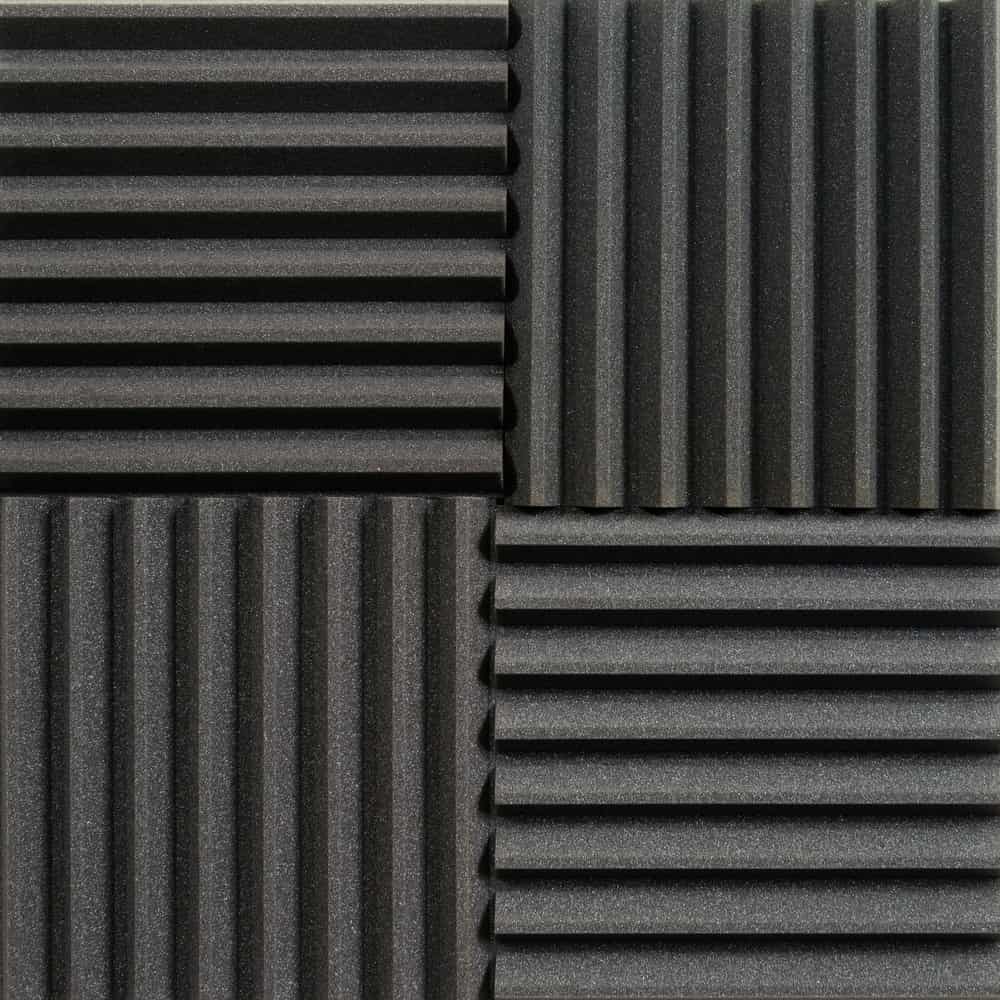
It will only alleviate the room acoustic quality in YOUR room. Ok, what is the take on here: You CANNOT eliminate sound transmission by applying thing absorbent materials on your walls. Diffusers are reflective surfaces/parts in different depth and orientation, so they do exactly what the name suggest: they scatter the sound in order to eliminate the flutter. If you aim is to create a quality atmosphere within the room (because you are singing and you don't wanna hear that much echo of yourself), then you'd wanna use a combination of absorbing materials (those sponge like pyramid tiles you see everywhere, or simply carpet, curtain, felt etc) and diffusers.

If the absorption is too minimal compared to reflection, you'll start hearing echo. If your room has no porous, woven materials like carpets, drapery and textile, it will reflect from all the walls, wood and metal furniture and surfaces such as leather and canvas. Now let's discuss Sound Absorption and Reflection: When you speak in a room, it hits to surfaces and it does two things: It either reflects back, or it gets absorbed. That is probably why you keep hearing those base bump bumps from your teenager's room. Base sounds have long wavelengths, therefor they require even greater space between the walls or they will travel to the neighbor. The type of the sound is also important at this point. The thicker the wall, the bigger the gap between the walls, and the denser the wall material, the less sound your neighbor hear from you. What to these mean? If you want to sing in your room and want the next door neighbor not to hear you, you should start with rather thick double wall construction, preferably brick or something as dense as brick and provide sound insulating material (like glass fiber) in between the double walls. The way to do that is 3 ways: Use thick material, use dense material, use void with insulation. If you are worried about your sound transmitting to your neighbor (or vice versa), you should be taking measures to lower sound transmission. You've been warned!Īs an interior designer, I would like to explain two main concepts in acoustics: Sound Transmission VS Sound Absorption and Reflection. If your volunteers are under 5 years old, I suggest doing the painting outside, as the likelihood of spillage and messes is very high. Of course, you'll also need some willing volunteers to help decorate the canvases. screwdriver and/or drill for mounting the panel to a wall Staple gun (to staple the backing onto the frame) Picture hangers, two per panel, from a hardware or art store. You could use old newspaper if you wanted to, as long as it's big and strong enough. Paper backing, to hold the foam in place. Acrylic paint to decorate the canvas, from any art store I bought a whole roll of it online for about $40. One 2x2 sheet of 1.5" thick sound absorbing "eggcrate" foam. I bought mine at a local art store chain called Curry's for about $10 each. One 1.5" deep art canvas, with dimensions of at least 2x2 feet.


To make one sound absorbing panel, you will need: In my case, decorated with the help of my wife and kids, to add colour and fun to our home theater/rec room/play room. The panels are decorated to suit the decor of the room. They are simple artistic canvases with thick wood frames, stuffed with sound-absorbing "eggcrate" foam. The basic construction of these panels is simple, and certainly nothing new. All those sound waves that would have bounced off the walls are instead mostly absorbed by the panels, so that the primary wave from the speakers is what you hear most. High frequency "ringing" is killed off, and bass is no longer muddy or boomy. When placed in strategic locations along the wall, the effect is dramatic. The purpose of a sound absorbing panel is obvious: it absorbs sound in a room. In short, the hundreds or thousands of dollars you spent on a nice amplifier and speakers is wasted because the acoustic properties of the room are lousy. It mixes in weird ways, drowning out some parts of a soundtrack while emphasizing others. Mostly, it bounces around and hits your tender eardrums multiple times from different angles. In a room with hard, flat surfaces, sound tends to do nasty things.


 0 kommentar(er)
0 kommentar(er)
